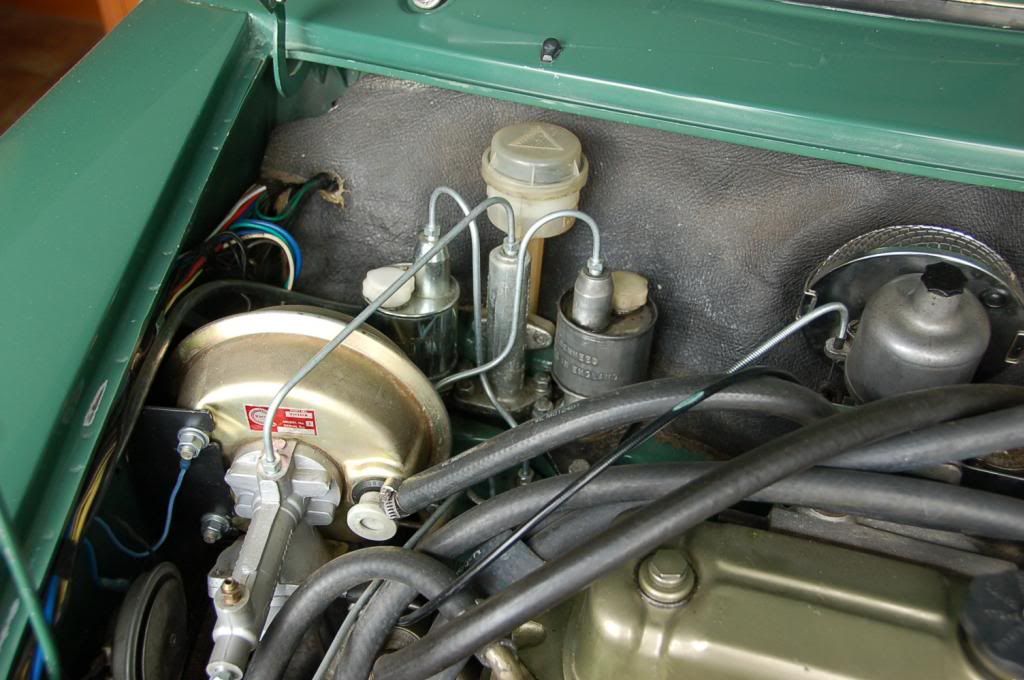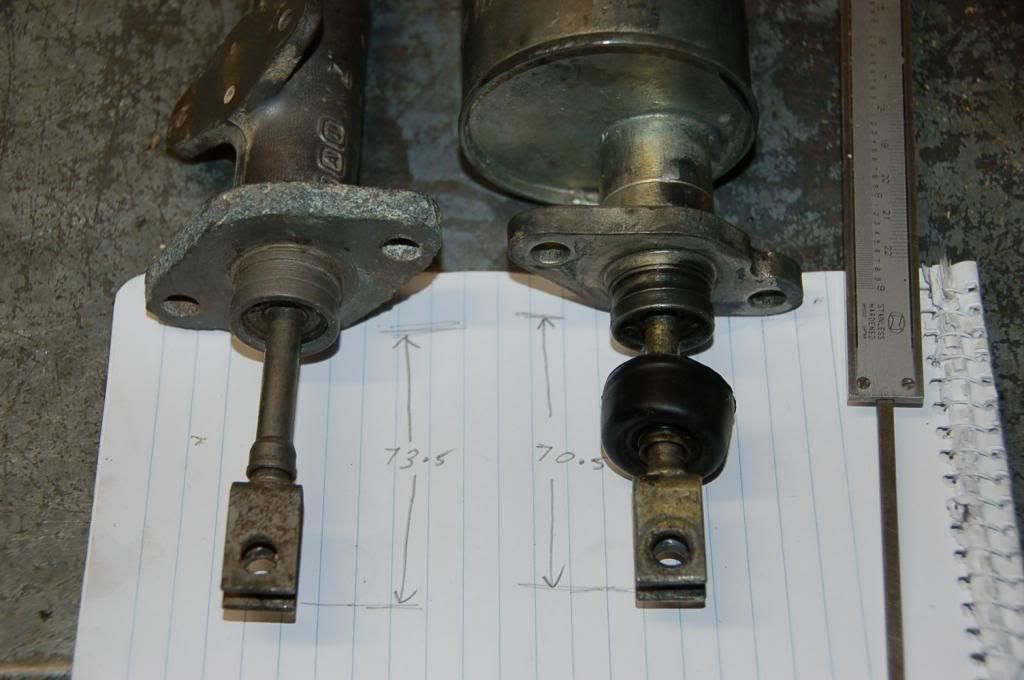The Twini clutch has been giving me problems for ages – not enough travel for a smooth disengagement.
The clutch uses standard Mini hydraulic components and pedal box. All hydraulic components and mechanical wear points are new including the arm, plunger and all pins.
The only difference being the use of tin cans, not plastic, on the clubman GT pedal box. Not sure if the pedals are the same between the old and new Australian Minis. And for some reason the clutch pedal sits lower than the brake pedal.
Measured up some old master cylinders and found that the push rod on the tin can is about 3mm longer than the one on the plastic style cylinder.
This will result in 3mm more travel in the clutch master cylinder, which equates to about 0.4mm travel at the clutch thrust bearing. Referring to the following link you only need about 0.82mm travel to release the clutch.
http://www.minimania.com/classic-mini-c ... cfm?id=153


So I will extend the push rods by 3 mm, and give it a go. Need to get the rear engine back in first.
